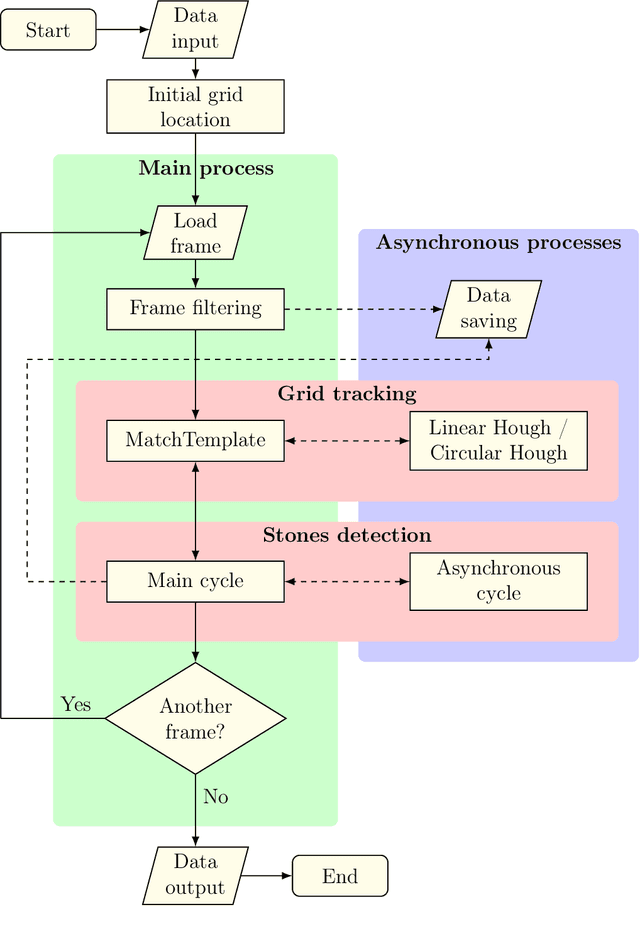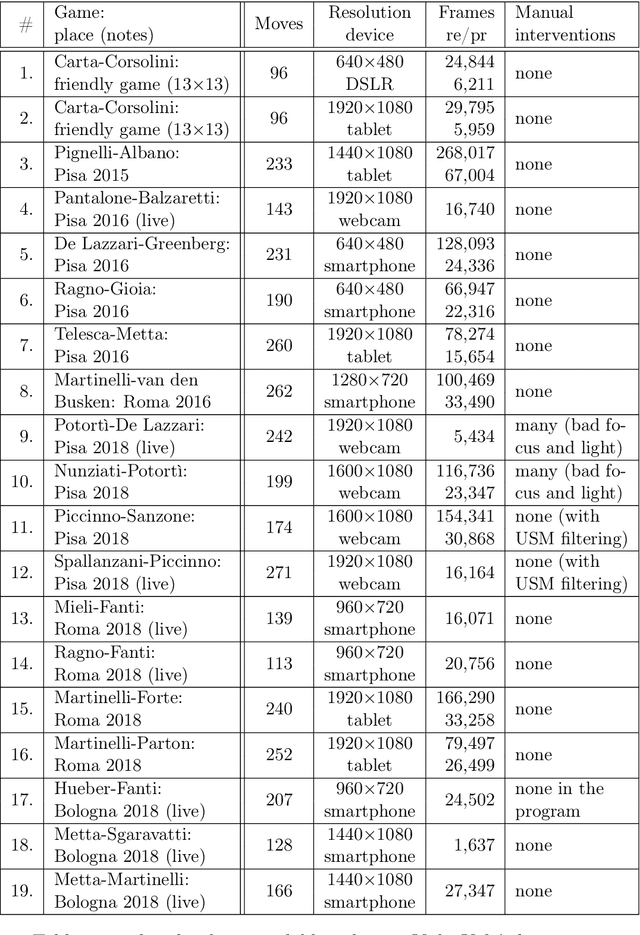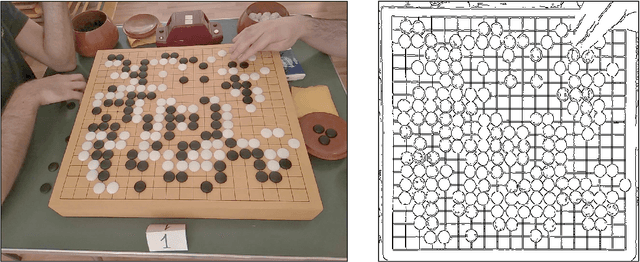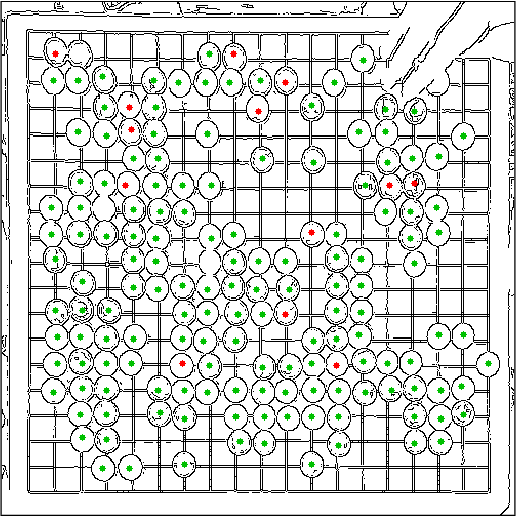VideoKifu, or the automatic transcription of a Go game
Paper and Code
Jul 04, 2018



In two previous papers [arXiv:1508.03269, arXiv:1701.05419] we described the techniques we employed for reconstructing the whole move sequence of a Go game. That task was at first accomplished by means of a series of photographs, manually shot, as explained during the scientific conference held within the LIX European Go Congress (Liberec, CZ). The photographs were subsequently replaced by a possibly unattended video live stream (provided by webcams, videocameras, smartphones and so on) or, were the live stream not available, by means of a pre-recorded video of the game itself, on condition that the goban and the stones were clearly visible more often than not. As we hinted in the latter paper, in the last two years we have improved both the algorithms employed for reconstructing the grid and detecting the stones, making extensive usage of the multicore capabilities offered by modern CPUs. Those capabilities prompted us to develop some asynchronous routines, capable of double-checking the position of the grid and the number and colour of any stone previously detected, in order to get rid of minor errors possibly occurred during the main analysis, and that may pass undetected especially in the course of an unattended live streaming. Those routines will be described in details, as they address some problems that are of general interest when reconstructing the move sequence, for example what to do when large movements of the whole goban occur (deliberate or not) and how to deal with captures of dead stones $-$ that could be wrongly detected and recorded as "fresh" moves if not promptly removed.
 Add to Chrome
Add to Chrome Add to Firefox
Add to Firefox Add to Edge
Add to Edge